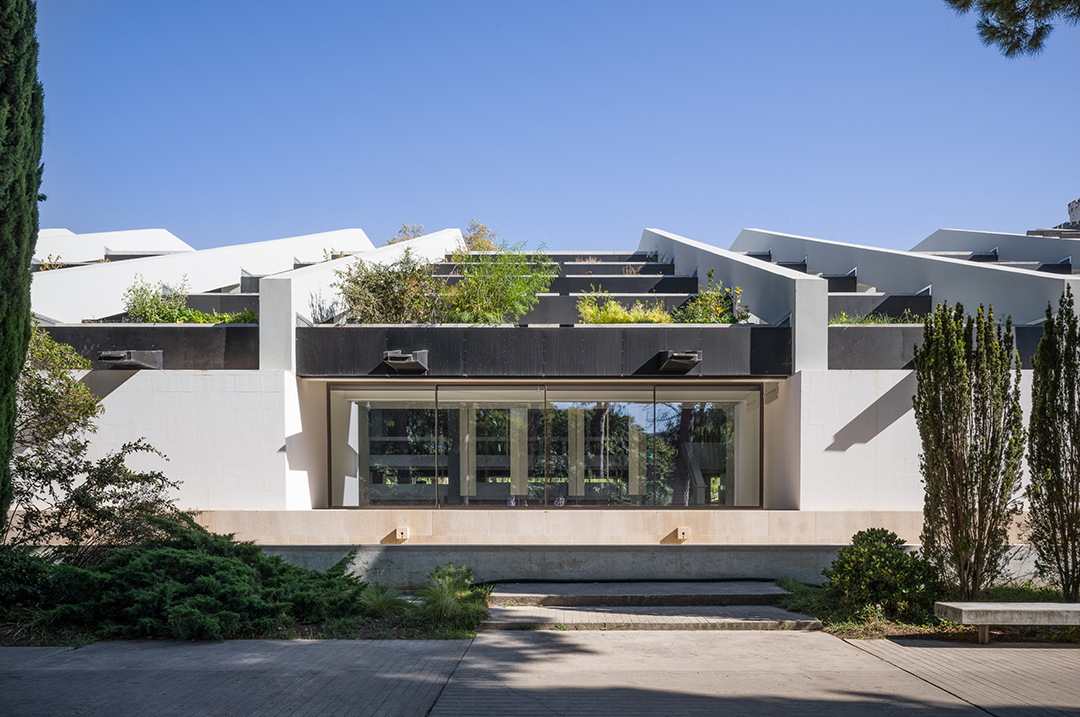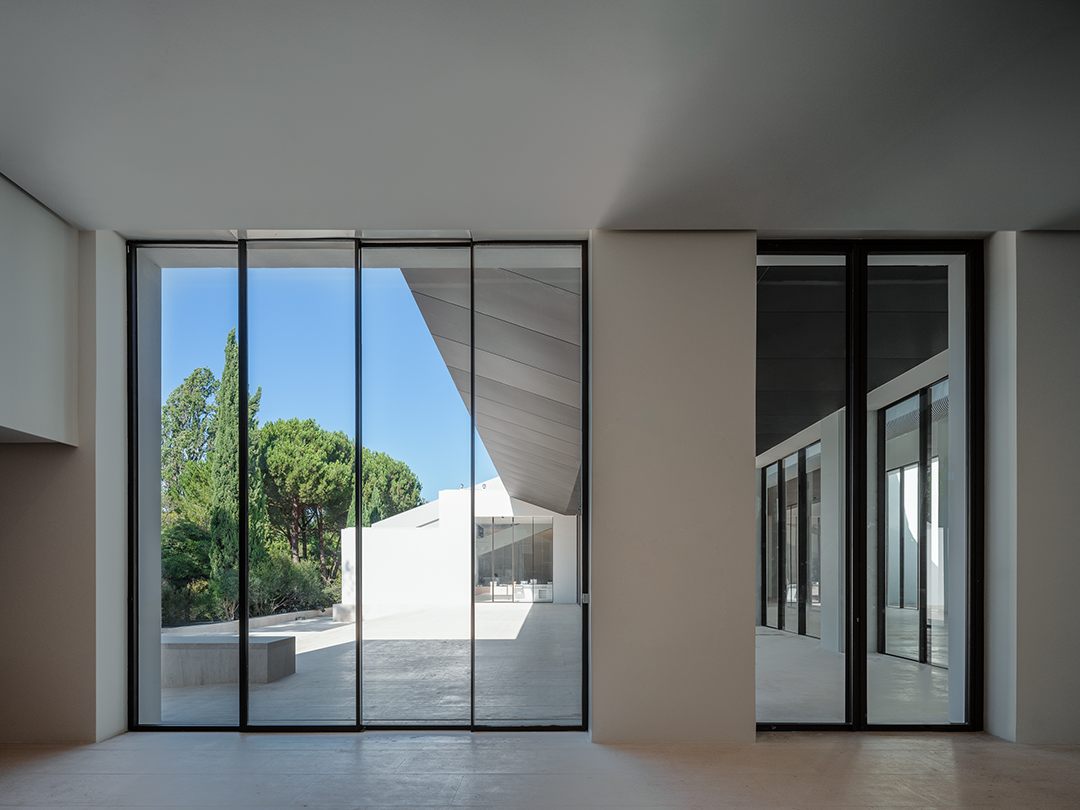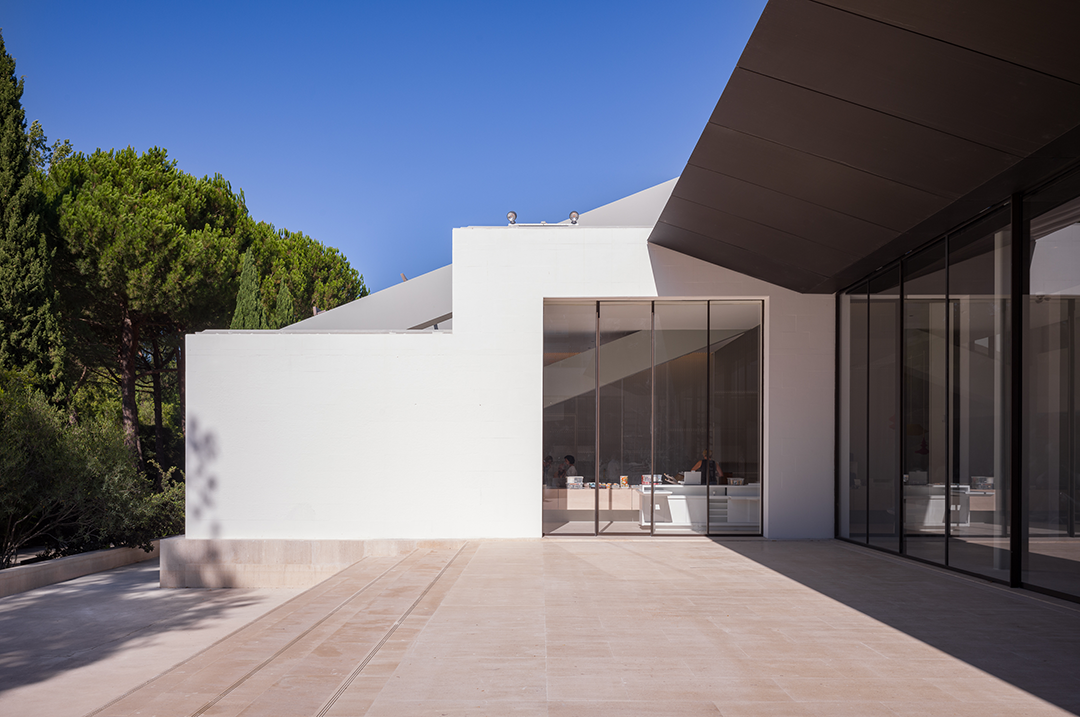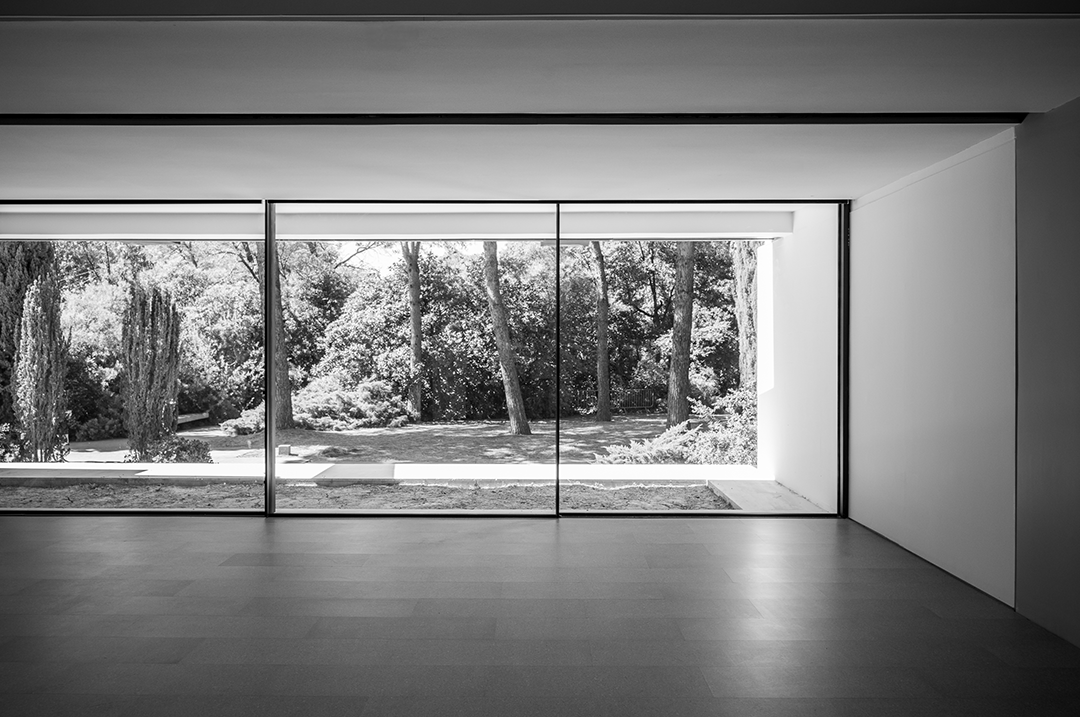



建筑设计 Kengo Kuma & Associates+OODA
项目地点 葡萄牙里斯本
建成时间 2024年
本文照片由摄影师Pedro Cardigo授权发布。
隈研吾对Gulbenkian现代艺术中心(Centro de Arte Moderna Gulbenkian,简称CAM)原有的建筑进行了彻底的重新设计。原建筑建成于1983年,由英国建筑师Leslie Martin设计。本次重大改造作为一个范围更大的项目的一部分,旨在加强该建筑与Gulbenkian花园之间联系。
Kengo Kuma completely reimagined the previous CAM – Centro de Arte Moderna Gulbenkian building, designed by British architect Leslie Martin and inaugurated in 1983. This major reconfiguration of CAM is part of a wider project that aims to establish a greater connection between the building and the Gulbenkian Garden.




隈研吾的设计意在消解建筑和花园之间的界限,将所有景观元素整合为一个整体。新建筑外立面最引人注目的是一个巨大的顶篷,上面覆着白色瓷砖,贴合着屋面柔和有机线条。这个顶篷将建筑的主入口变成了一个介于艺术中心和花园之间的通道,专为游客的社交活动而设计。这个空间既能起到庇护作用,又能让人感受到放松、欢迎和不受拘束。
Kengo Kuma’s project seeks to dissolve the boundary between these two spaces, proposing a holistic integration of all the elements of the landscape. The large canopy covered in white tiles with soft, organic lines which now marks the façade of the new building transforms its main entrance into an area of passage between CAM and the garden, designed for the socialisation of visitors. A space that can be both protective and relaxing, welcoming and liberating.




隈研吾的设计灵感来自于日本传统民居中常见的空间类型“缘侧”(Engawa),即屋檐下的长条形空间。除了顶篷,“缘侧”的概念也体现在建筑的各处特征中,从新的展览空间的设计到各入口的开口设置。
Kuma was inspired by the Engawa typology, a path protected by the eaves of the roof, not entirely inside or outside, which is commonly found in traditional Japanese houses. The Engawa concept is also reflected in various features of the building, from the design of new exhibition spaces to the opening of various access points.





建筑体量的通透性,以及自然光线洒入内部的方式,都强调CAM作为一个开放、无障碍的艺术中心的理念,鼓励每个人都把这里当成自己的空间来使用。
The transparency of the volumes and the way the natural light falls inside are intended to underline the idea of CAM as an open and accessible art centre, where everyone is encouraged to make this space their own.




“缘侧”的有机曲线、庇护感以及它在建筑中的表达,也启发了A Practice for Everyday Life设计工作室为CAM设计新的视觉标识。
The Engawa and the way it translates into the building, with its organic lines and sheltering nature, also inspired the design studio A Practice for Everyday Life in developing CAM’s new visual identity.
CAM也将这一概念延伸囊括到其使命中,它提出了一项多学科计划,致力于触达不同的受众,并吸引更多的参与式体验。
The concept also extends to the mission of the new CAM, which proposes a multidisciplinary programme strongly committed to reaching diverse audiences and inviting to a more participatory experience.




隈研吾事务所与景观建筑师Vladimir Djurovic密切合作,使得建筑与周围自然元素之间的关系得到了加强,让建筑与景观更进一步地融合。
In collaboration with landscape architect Vladimir Djurovic, the relationship between the surrounding nature and the building, which is now more immersed in the landscape, has been enhanced.




Vladimir Djurovic设计的南花园方案只使用本地植物,延续了葡萄牙建筑师Gonçalo Ribeiro Telles和António Viana Barreto对原有花园的最初设想。
Vladimir Djurovic’s proposition for the South Garden elaborates on Portuguese architects Gonçalo Ribeiro Telles and António Viana Barreto’s original vision for the pre-existing garden, using only native flora.
艺术中心与林木茂密的花园之间,过渡地带变得更加模糊,二者愈加统一、和谐。
The transition zones between CAM and the denser, more wooded area of the garden were blurred, conferring the whole a greater sense of unity and harmony.





随着花园的扩建,其逐渐拥抱南边的城市街区,艺术中心也随之成为通往Calouste Gulbenkian基金会和花园的主要通道,让游客得以接触到更具实验性和创新性的内容。
With the extension of the Garden and its opening to the city to the south, CAM’s building will become the main gateway to the Calouste Gulbenkian Foundation and Gardens, allowing visitors to come into contact with a more experimental and innovative offer.
该项目还将使得Gulbenkian现代艺术中心与其他建筑之间的关系更加紧密,并加强其与周边街区、与在那里生活和工作的人们的联系。
The project also creates a closer relationship between CAM and the other buildings of the Foundation, and a greater connection with the surrounding neighbourhoods and the communities that live and work there.



项目信息
Architecture
KKAA - Kengo Kuma Associate Architects (Principal in charge: Kengo Kuma)
OODA - Oporto Office for Design and Architecture
Landscape Architecture
VDLA - Vladimir Djurovic Landscape Architecture
Traços na Paisagem - Lugar Invisível
Structural Engineering
Buro Happold
Quadrante
Visual Identity
A Practice for Everyday Life
本项目由Kengo Kuma & Associates授权发布,文字译自Gulbenkian现代艺术中心官网,编排版权归有方空间所有。实景照片由摄影师Pedro Cardigo授权发布。欢迎转发,禁止以有方版本转载。
上一篇:建筑地图254|湖北:新项目
下一篇:混响森林:拉脱维亚梅扎公园露天舞台 / Mailitis Architects+J. Pogas Birojs